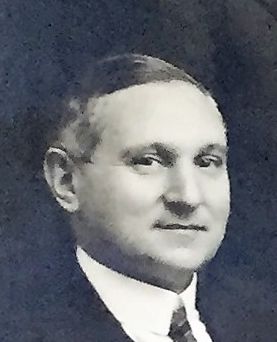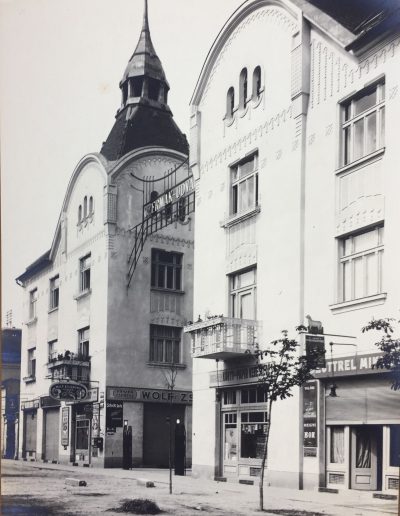Telkes Henrik
(b. Henrik Rosenthal, 1881, Sânnicolau Mare, Austria-Hungary - 1964, Timişoara)Architect and manufacturer
He graduated from high school in Timisoara and the Faculty of Architecture at the Polytechnic Institute in Budapest. For 5 years he worked at the Timișoara City Hall. Between 1910 and 1912 he designed 8 palaces in Timisoara. After this fertile period as an architect, he invested in the family business Rosenthal and Telkes Soap Factory, established in 1918. After the nationalization of the company, he worked in state institutions, as a designer, until the age of 80. He has been a member of the Israelite Community, the Lloyd's Society, and numerous associations.
Projects made in Timisoara
Year 1910. Kovács Pharmacy Palace (built in 1910, completed in 1910), originally built for the pharmacist Anton Nägele, who sold it in 1917 to the pharmacist Aladár Kovács, Dacilor Street no. 10.
Year 1911. Csermák twin houses, Iuliu Maniu street no. 36; Report house (with commercial spaces on the ground floor) Miksa Róna, later Arthur Kincs, Roman Square no. 2 / Ștefan cel Mare street no. 4; Katalin Panits Report House, King Carol I Boulevard no. 19; Miksa Palace (Max) Brück, Iuliu Maniu Boulevard no. 40; Ágoston Gálgon Palace or the House with the Rooster, Eugeniu de Savoya street no. 9 (The plans are signed by Eng. Jenö Klein, who probably led the construction work).
Year 1912: Löffler Palace, Victoriei Square no. 1; Baron Béla Gudenus Palace, Gojdu street no. 7. In 1942, a family villa, Titu Maiorescu street no. 15. He designed industrial constructions, for example, the Timișoara Wastewater Treatment Plant in the Iosefin neighborhood between 1910-1912.
He contributed to the construction of six buildings with social housing built on Take Ionescu Boulevard in Timisoara. The project, funded by the Timişoara City Hall and the Ministry of Budapest, was started in 1911 and completed a few years later. They are the first social housing constructions in the history of the city.
Telkes used an elegant geometric secession style to decorate the facades of the buildings he designed, with well-proportioned and discreet decorations. Its larger buildings also stand out through the corner towers and the bay windows that give plasticity to the facades. Sometimes they appear on facades and elements from the repertoire of eclectic architecture. The bas-reliefs and statues on the facades of Löffler Palace in Victoriei Square are impressive.
Sources
- Conversations with Mrs. Marika Nicolin, the architect's daughter, Timişoara
- Conversation with physicist Peter Freund, University of Chicago
- Ki Kicsoda? A Bánsági Közélet Lexikonja, Timişoara 1930
- The vintage photos were scanned from the photo folder of the architect Henrik Telkes, archive of Mrs. Marika Nicolin, the architect's daughter.



